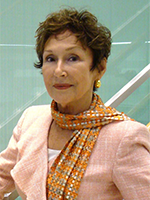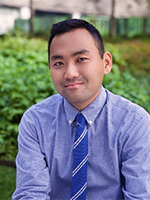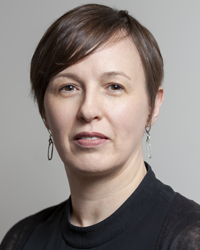Editor’s Note: The John A. Hartford Foundation is collaborating with ASA to advance equity in aging by supporting ASA RISE, a 20-week social justice and leadership program for rising leaders of color in aging, and via the development and dissemination of equity-related, partnership-based thought leadership through ASA’s Generations platform. This blog post is part of that series.
The ASA RISE program brought us together through an incredible fellowship designed to develop and empower emerging professionals of color in the field of aging. Our capstone project made us a team, each of us with a unique story. And as we dove into our identities two things became clear: how we intersect as a group and who was missing from our (imaginary) table—the older adults we serve and the younger generation.
Via discussions, we discovered ties that bind us together, as women of color, generationally, as millennials, and as leaders in the aging field seeking professional growth. These commonalities led to the creation of our group name, Era of Empow(h)erment. We realized that in our efforts to combat ageism through allyship for our project, we were collectively building something we wanted for ourselves, too. Through this realization a framework was born, and we called it Building Bridges.
Addressing Ageism and Systemic Inequities
Ageism marginalizes older and younger generations, limiting their perceived value in society, while historical events and life experiences perpetuate intergenerational trauma. This divide between generations is deepened by harmful stereotypes, cultural biases, systemic inequities and limited access to culturally relevant resources, which ultimately prevent connection and understanding.
Likewise, the particularly American focus on individualism often conflicts with the collective values found in many other cultures, creating further barriers to cohesive community building. The appearance of scarcity in resources deepens these issues. Addressing systemic inequities (via an equity lens) by challenging ageism and forming intergenerational connections, can be a catalyst for change.
Building Bridges: A Framework
The Building Bridges Framework challenges societal perceptions of aging and drives systemic change via intergenerational dialogue, culturally relevant programming, and community-driven solutions. This framework prioritizes lived experiences, acknowledges intersectional identities and incorporates CECIL (Community Building, Empathy, Creativity, Inclusion, Love and Allyship) and Liberatory Consciousness. We envision a community that connects, supports, and empow(h)ers the unique, lived experiences across the lifespan.
We use storytelling and unconventional spaces, centralizing the voice of lived experiences, to bring people together and build community.
This framework can be adapted across individual, community, organizational and policy levels. Our recommendations focus on four pillars to foster intergenerational connections and build allyship across generations:
- Facilitate Intergenerational Connections: Use storytelling and unconventional spaces, centralizing the voice of lived experiences, to bring people together and build community. This can include hosting events and creating opportunities for all generations to grow and learn together. Events may be informal and unplanned or be more formal through church gatherings, block parties, or community gardens.
- Support Culturally Relevant Resources: Ensure resources are accessible and culturally appropriate, with financial support through fundraising efforts, sponsorship, mentorship, and grants. Examples include funding—making sure grants, fundraising opportunities, sponsorships, and memberships are available to those in the community who typically are neither involved nor even considered. Additionally, ensure spaces are accessible where people can engage across generations in activities to allow for connection—green spaces, parks and recreation areas—third spaces that don’t require money to inhabit.
- Empower Advocacy and Education: Promote understanding of intersectional identities (internal reflection), challenge biases to bridge differences, and encourage individual and organized advocacy for systemic change through education and coalition-building. Education can be about types of advocacy opportunities like lobbying, as well as how to find common ground with others, framing the issue to the audience, and building a coalition of volunteers, community members, supporters, potential funders, etc.
- Increase Equity Through Liberatory Consciousness: Ensure all voices are heard, via inclusive representation, highlighting lived experiences, self-awareness, engaging all stakeholders and leaving no bystanders, but collective engagement. Liberatory consciousness is an approach to seeing and understanding oppression and its impact. This framework allows us not to be disillusioned as we push back against systems and institutions that resist change and hold back progress. The Maryland Department on Aging (MDOA) used this framework when developing their Multi Sector Plan for Aging. We will highlight MDOA’s example as a case study.
The Impact of Building Bridges
The Building Bridges framework challenges generational (conscious and unconscious) biases and promotes intergenerational allyship by bringing people together to learn from one another’s lived experiences and lay a foundation for a future we want to see for ourselves—one where our intersectional identities are celebrated, our stories are heard, and our collective efforts cause a ripple impact that can lead to systemic change.
We are excited to dive deeper into the Building Bridges framework during our upcoming presentation at the 2025 On Aging Conference, where we will explore examples of how this framework can be implemented in practice and shared in discussion.
We invite participants across all sectors to attend our Building Bridges with ASA RISE, an Intergenerational Allyship Framework session. Join us Tues., April 22, at 10 a.m. EST, in Celebration 5.
Cristina Diaz(she/ella), MPH, is manager of Community Programs (nutrition, caregiver, Aging with Pride) at AgeOptions, the Area Agency on Aging of suburban Cook County, Ill. Stacy Subida (she/her/hers), MSW, LCSW, is a supervisor at the Department of Family and Support Services, Senior Services Division, the City of Chicago’s Area Agency on Aging. Makieya Kamara (she/her), MSW, LCSW, MNL, is director of Elder Services at Action for Boston Community Development, Inc. Chelsea Wheeler (she/her/hers) is program manager for Maryland’s Department of Aging in Baltimore.
Photo credit: SeventyFour









